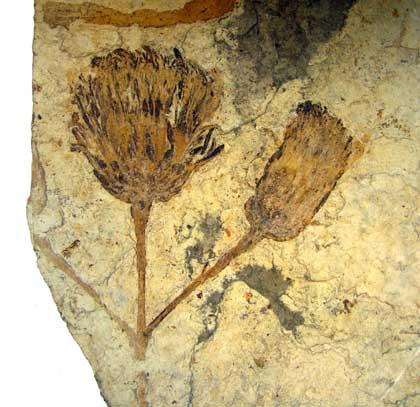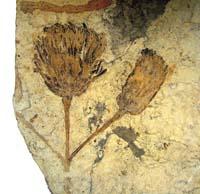A beautiful fossil that could unravel the origin of daisies
2010/09/28 Aulestiarte Lete, Izaro - Elhuyar Zientziaren Komunikazioa

This beautiful flower fossil has been discovered in some rocks of Patagonia and researchers believe it can be an ancient relative of the daisies or solar flowers we know today. Since the rocks in which it has been located emerged 47.5 million years ago (in the middle of the Eocene), researchers have suggested that the plant group mentioned was created about 50 million years ago, probably in southern South America.
Asteracaea is the largest and most diverse group of flowering plants, with about 23,000 species, including daisies, solar flowers and chicory herbs. Except in Antarctica, it is present on all continents. But so far there was not enough data to know the origin of the group. Researchers' suspicions about their location in South America have confirmed the discovery of an amateur fossil in 2002. The study was conducted by researchers from the Museum of Natural Sciences of Argentina.
The fossilized plant, very well preserved, has been classified by the researchers in the Asteracaea group, after confirming its characteristics. For example, it has flowers grouped in a similar way, some hair-shaped prominences between the flowers and, under the floral set, presents a structure similar to the leaves. In addition, specimens of pollen typical of the group have been found.
Image courtesy of: Science.

Gai honi buruzko eduki gehiago
Elhuyarrek garatutako teknologia




